Keeping your drivers, customers and the public safe is one of the most important parts of a transport business. This is especially the case when the business involves putting drivers in one of your vehicles on the public roads.
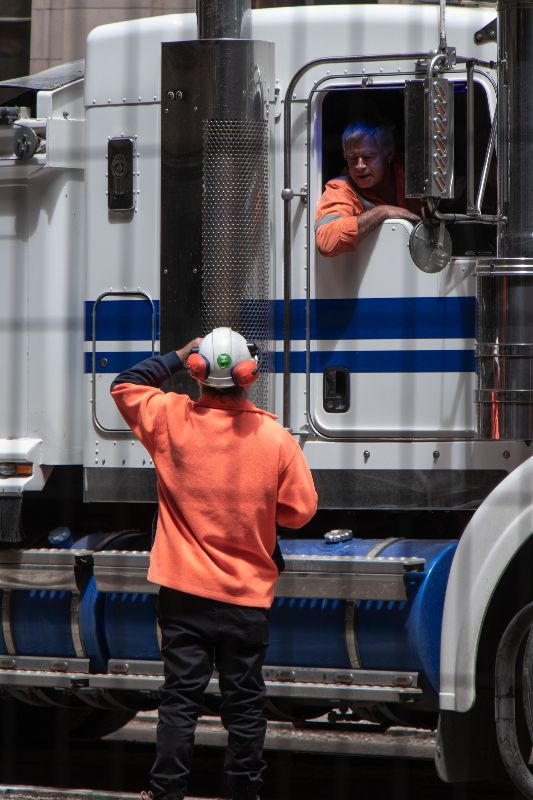
Modern vehicles have so many mechanical parts that require maintenance and care. They also have many electronic components that can potentially go wrong. As a result, the role of keeping a vehicle safe for everyone is a vital commitment. It should not in any way be undermined or underestimated.
Safety
Just because a vehicle is safe to drive one day, does not mean that it is safe to drive another day. And just because a vehicle has been returned safely with no obvious mechanical or structural issues, does not mean that the vehicle is safe to drive the next day.
This means that the role of pre-trip and post-trip inspections is absolutely vital. Vehicles accrue not only miles but potential issues that can make them dangerous for drivers and put your business in a precarious situation. This is true both from the point of view of the safety of the vehicles that are going out. It is also true in terms of protecting the business from potential lawsuits or financial losses through negligence or loss of trade.
Taking Inspections Seriously
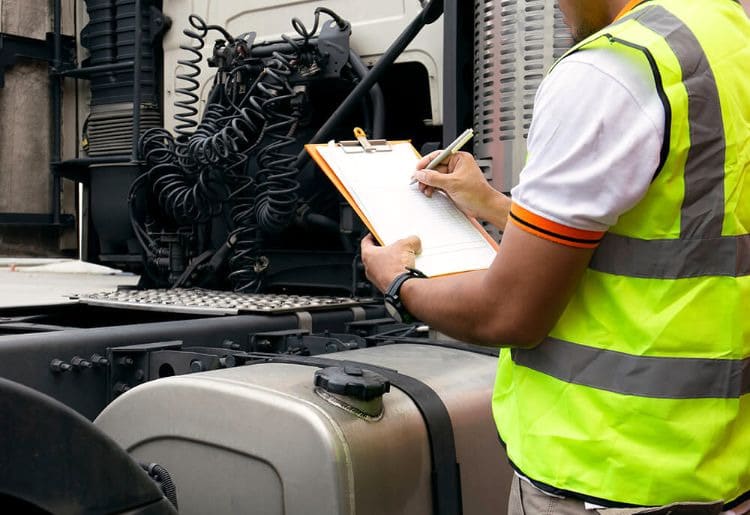
A vital part of fleet management, therefore, is taking pre-trip and post-trip inspections seriously. Many fleet managers will know a driver or drivers in their fleet who don’t tend to take these inspections seriously, as they take up time and rarely flag up a serious problem. However, they are a vital part of the successful running of a fleet and the safety of all involved. There is also a wide range of factors that should be considered.
Staying Legal
For any successful business, legal compliance is a key issue that should always be at the forefront of planning and execution. Fleet managers should make sure that they are aware of any national or local legislation or regulations that exist with regards to pre-trip or post-trip inspections.
Legislation may be general, or it may be specific to different industries. For example, a vehicle that carries passengers is required to do a post-trip inspection at the end of the working day. This follows a particular format and with a fresh report generated for each vehicle.
Although this could be considered by some to be an onerous task, it effectively generates a paper trail that can tell the story of a particular vehicle. It also enables the business to keep on top of both any individual problems the vehicle occasionally has but also any persistent issues that occur.
-
Photo: Zetong Li, Unsplash
These end of day inspections will typically include:
- A test of the braking system
- A test of all vehicle lights
- A test of the windshield wipers
- An inspection of emergency equipment
- A test of tire condition
- A test of the steering
- A test of any coupling equipment
A quick glance at this list and it is obvious that these are daily tests of the most important equipment on the vehicle in terms of safety.
Failure to do these daily tests and log them in the appropriate manner could be detrimental for the business. This is in terms of legal issues and compliance as well as opening up the business to potentially damaging lawsuits in cases of an accident. More importantly, failure to conduct these checks could lead to an unsafe vehicle being on the road and injury or loss of life as a result of such negligence.
Driver Education
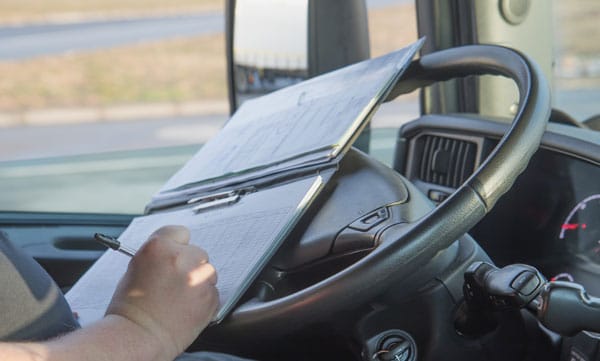
A major part of fleet management is not just about managing the vehicles but about managing the personnel. It’s about managing one of the most important resources in the business, that is, the drivers.
Many drivers will be confident in the safety of their vehicles. However, they may not immediately understand the importance of pre-trip and post-trip inspections on a daily basis. This is certainly the case if the inspections can seem time-consuming either at the beginning or the end of the day.
It is important, then, to educate drivers on the importance of these inspections, although not just for legal compliance. It is also important for reassuring them of the safety of the vehicles and the safety of the business for passengers and the drivers.
Safety checks are something that can easily lapse over time as people get lazy or forget to do them. Therefore, it is important that regular education of drivers takes place regularly. Whether through training sessions, mock inspections, and check-ups of drivers’ inspections. This ensures that everyone is on the same page in terms of the importance of regular pre-trip and post-trip inspections.
Educating Staff

As well as educating drivers, it is also vital to educate workers who work in-house about these inspections. They need to understand:
- How important the inspections are, and
- How important the results of the inspections are, and that those results need to be taken seriously.
In the aviation industry, if an inspection indicated that a problem existed on an aircraft, however small, that inspection would be taken seriously, examined, and fixed. Exactly the same should be the case within the automotive industry.
Staff should take all inspection reports seriously. They should also act on the results of any inspections seriously and without prejudice. If not carefully managed, small issues can easily become large issues if they are not taken care of.
Good channels of communication between drivers, fleet managers, and the shop workers will help to keep these processes running smoothly. It will also help the fleet run more smoothly.
What is a Pre-Trip Inspection?
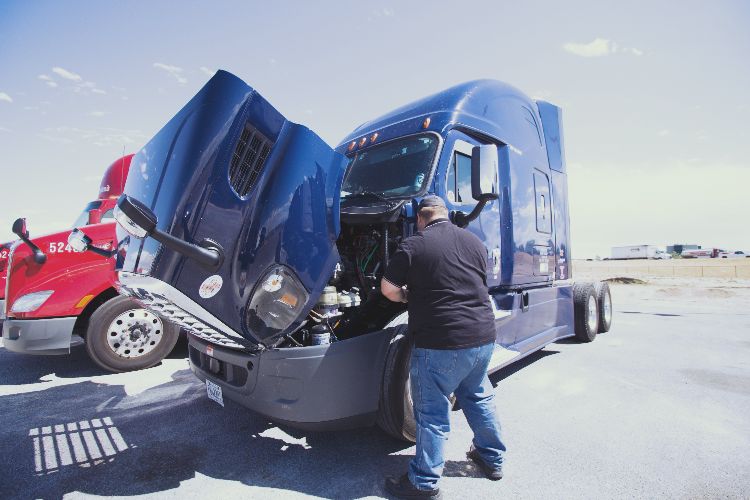
Although both kinds of inspection are important, both serve a slightly different purpose. Arguably the pre-trip inspection is the more important of the two. This is for the reason that it decides whether the vehicle is in a fit or safe enough condition to be driven that day.
As a result of this, the inspection should be considered very seriously and should not be taken lightly. The impact of a careless or cursory pre-trip inspection could be to send a vehicle on the roads that are not safe for use. This could result in loss of life, injury, or damage to the reputation of the business.
What Will A Pre-Trip Inspection Cover?
It will cover a number of important items that will involve determining whether a vehicle is safe to take out onto the roads that day. This is broadly the same as the list produced earlier, but also considering any damage to the vehicle.
A business will need to consider a number of factors:
- How is the pre-trip inspection conducted?
- Who conducts the pre-trip inspection?
- In what format is the pre-trip inspection report produced – for example, on paper, using a tablet, or an app?
- How are the reports to be accessed – for example by those in the shop who may need to work on the vehicle should there be any problems?
A pre-trip inspection will neither be effective nor efficient if the information is not readily available to those who will need to examine it. That is, drivers, fleet managers, in-house staff, etc.
Any problems that may be spotted during the inspection, for example, problems with seat belts, tires, windshield wipers, brakes, etc., should be reported in a standard way.
Many businesses that use pre-trip inspections will have standard forms. These can be particularly valuable for marking external issues, perhaps on a 2D top-down model of the car. Additionally, a similar system will need to be in use also for internal issues.
Mutual Understanding

Whatever terminology is used, or whatever reporting method is used, it is important that all members of the team are on the same page. In that, there is a common understanding of how problems are defined and described. This will help those who are working on the vehicle for repairs to have as clear an understanding as possible as to what problems need fixing. This may require regular training or refreshers on what is required.
Reducing Liability
There also needs to be an understanding of what may be considered a minor problem. A minor problem that needs reporting but the vehicle can go out that day and be repaired at a convenient point, and a major problem that requires immediate repairs.
For example, a minor problem such as a small dent on the side of the, as long as it is noted and scheduled to be repaired, need not stop that vehicle being used that day. However, a noted failure in the operation of the brakes, the windshield wipers, or the tires would be considered more major problems. These problems will require immediate repair before the vehicle can be used safely to transport goods or passengers.
The pre-trip inspection is therefore seeking to answer the question, ‘Is this vehicle safe to take out today, right now?
What is a Post-Trip Inspection?
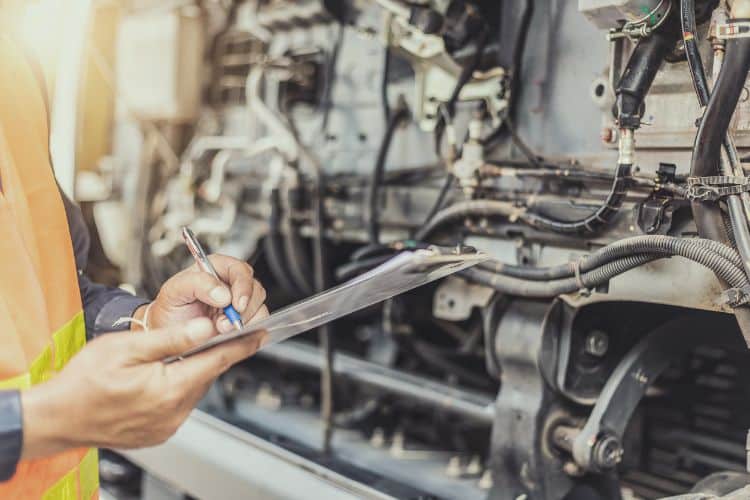
By contrast, the post-trip inspection is seeking to answer a different condition:
‘Does this vehicle have any damage or failures to its operation that means it needs repairs before the vehicle is taken out again’?
This may be damage caused as a result of it being out for operation that day. For example, a crash or if there has been a problem during the day in operating the vehicle. Examples could also be a broken windshield wiper or punctured tire. Or, general wear and tear on the vehicle over time that has now become noticeable.
As post-trip inspections are undertaken at the end, rather than the beginning of the day, they raise the issue of any vehicles that need remedial work done on them before they are taken out again.
Post-trip inspections and reporting procedures are also important as the vehicle may not be driven by the same drivers on two consecutive days. Efficient reporting methods in relation to these post-trip inspections mean that all drivers and relevant staff can be aware of any issues relating to particular vehicles. Drivers then taking up a vehicle for the day can be assured of good and constant checking procedures on that vehicle over time.
As with the pre-trip inspections, post-trip inspections may flag up issues that need resolving before that vehicle can be used again. This allows fleet managers to manage the vehicles available to their drivers over time. At the same time, they will then be aware of which vehicles are currently off the road for maintenance or repair.
Other Considerations
The question is sometimes asked as to whether it would be adequate to have only pre-trip inspections. However, the answer from a safety and fleet management perspective is a resounding no.
Pre-trip inspections will only flag up a potential issue with a vehicle at the last possible moment and may not give enough time for a repair to take place. There also may not be an available vehicle at such short notice. This can result in a loss of trade, profit, and reputation for the business.
Having both pre-and post-trip inspections doubles the number of eyes on the vehicle and allows for potential problems to be flagged up ahead of time. This makes it easier to arrange alternative transport and minimize loss of trade, profit, or reputation for the business.
Businesses may also consider where they park their vehicles. Vehicles awaiting maintenance or repair could be parked in a different area from those that are waiting to go out. This will help the fleet to run more efficiently and minimize the possibility of a vehicle awaiting repair accidentally being taken out on a job.
Takeaway
Successful pre-and post-trip inspection processes ensure that the appropriate vehicles are on the road. With clear reporting methods used consistently by all, regular training for those who need to inspect and report can increase the efficiency of the vehicle fleet. Vehicles requiring maintenance and repair are well documented and returned to the fleet in good time. This maximizes the efficiency of the business whilst keeping customers and the general public as safe as possible.

Geoff is a freelance writer at TruckersTraining.com with 20+ years of experience driving trucks and buses, dispatching, supervising, and training commercial driving teams. His expertise is writing topics on the transportation and trucking industry, and information technology trends.
